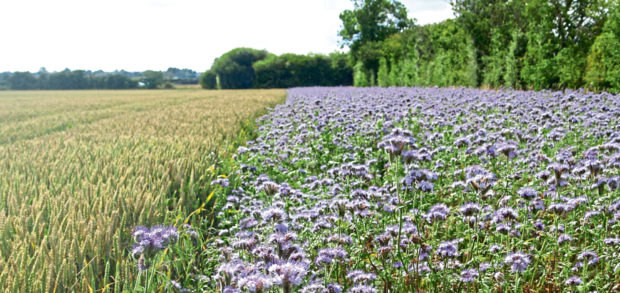The sight of irrigators on spring barely in local fields serves as an apt reminder of the constant and extra pressures farmers face in addition to the restrictions Covid-9 has placed on their businesses.
When I wrote my last article at the end of March the government had just announced the Covid-related support packages they were putting in place.
The two key packages available for farmers are the Self-Employed Income Support Scheme (SEISS) and the business Bounce Back Loan Scheme.
SEISS is available to many farmers provided they meet the following criteria: Traded in 2018-19 and 2019-20, intend to trade in 2020-21, are self-employed or part of a partnership with trading profits less than £50,000 and at least equal to any non-trading income.
Farmers can check eligibility through HMRC’s eligibility checker; all that is required is their unique tax reference number and national insurance number.
If the farmer is eligible a few quick steps follow to register for an online government gateway account, and thereafter the individual can complete the application. During the application the individual will be asked to provide either personal or business bank details.
Given that this grant is both taxable and impacts child tax credits, our advice is to have it paid into a business account therefore making it more transparent to the farm accountant.
Please note that claims must be made by the individual taxpayer.
Grants are calculated at 80% of monthly profit, averaged over a period of three years and capped at £7,500.
Applicants should expect to receive funds within six working days.
Understandably farmers have been busy with spring work up to the point when the system opened for claims, therefore many may not be aware of it, let alone have claimed.
The overriding reason that SEISS exists is to support businesses that have been adversely affected by Covid-19.
Many local farmers may take the view that spring work has been the same as it has always been, apart from the lack of notable rainfall, therefore do not believe their business has been impacted and won’t claim.
However, pick up a newspaper with a farming section and the warning signs are there, be it published articles such as “lockdown barley glut” or “why we should all eat more steak to save the beef industry”, both published in early May and centred on the negative impact Covid is having on the farming industry.
In addition, Defra announced last month that English dairy farmers can access grants up to £10,000 to compensate them for the lack of demand from the hospitality sector due to the forced closure.
The above suggests that farming could well be negatively affected by Covid-19. Therefore, in conjunction with their professional adviser, farmers should review their business and claim accordingly.
It is advised that records be kept of any reduction in turnover or lost work as HMRC may request this at a future date.
The second scheme is a business bounce back loan.
Unlike the above support scheme, this is a loan of up to £50,000. This application is made online to the bank and there are no set-up fees or repayments for the first 12 months. Thereafter the interest rate is 2.5% per year and the term of the loan is a maximum of six years.
The application is straightforward, and funds can be in the farm bank account within 72 hours. Farmers may feel that right now these additional funds are not required.
However, with no guarantee that come harvest the 2020 crops will be taken should brewers and distillers not be back to full capacity, then there is a distinct possibility that sheds will be left filled with produce with pressure on cashflow.
Mark Gibson is a partner with Thomson Cooper accountants.







